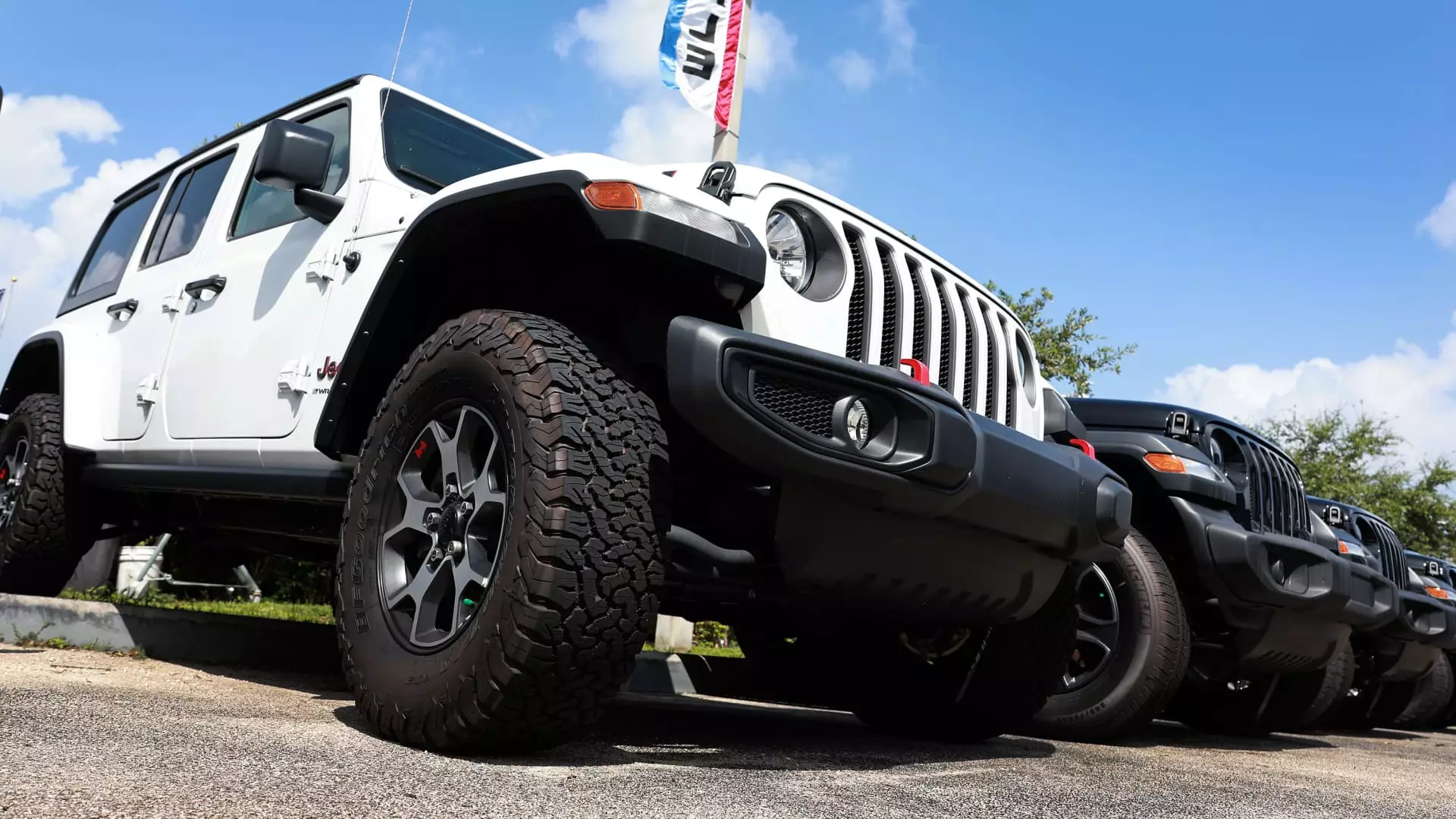The automotive industry in the United States is facing a myriad of challenges that have culminated in a bleak sales forecast for the third quarter of 2023. High interest rates, political uncertainties, and rising vehicle prices are expected to hinder sales, leading to projections of around 3.9 million vehicles sold, representing a roughly 2% decline from the previous year. This anticipated decline holds significant repercussions for both manufacturers and consumers.
The broader economic environment is unmistakably shaping the automotive landscape. According to both Cox Automotive and Edmunds.com, the forecasted dip in sales is not an isolated incident but rather a symptom of economic strain. Inflationary pressures, coupled with elevated financing costs, have pushed the average financing amount for a new vehicle to around $40,000, which begs the question: who can afford these rising prices? Jessica Caldwell, head of insights at Edmunds, strikes at the heart of the dilemma, noting that the expensive market is narrowing the pool of eligible buyers.
Despite the Federal Reserve’s recent decision to lower interest rates, there is skepticism regarding its immediate effectiveness in stimulating auto sales. Charlie Chesbrough, a senior economist at Cox Automotive, emphasizes that while the rate cut is a favorable move, it does not automatically translate into a robust sales rebound. The complexities of the automotive market in 2024, characterized by pronounced volatility, will likely create further challenges in the latter portion of this year.
The financial forecasts for the automotive industry are widely varied, with some automakers expected to experience growth while others brace for significant losses. Honda and Ford are earmarked as likely growth leaders for the quarter, while companies such as Stellantis, Toyota, and BMW may see considerable declines. Stellantis, in particular, has been grappling with a 21% decline in sales, a trend that CEO Carlos Tavares acknowledges as he shifts the company’s focus toward profitability rather than market share.
This shift in priorities reflects a broader industry shift that could redefine sales strategies moving forward. The commitment to maintaining profit margins over volume could have significant implications, not just for Stellantis but for the market as a whole. The rise and fall of individual brands within this ecosystem highlight how companies must adapt to remain relevant amidst shifting consumer demand and economic pressures.
Electric vehicles (EVs) represent a particularly intriguing segment of the market, with projections indicating a modest growth of around 8% in sales for the third quarter. However, even this upward trajectory is tempered by broader market constraints, most notably the expected decline in sales for Tesla, the long-standing leader in the EV sector. After witnessing years of dominance, Tesla’s market share is predicted to dip below 50% for the second consecutive quarter, raising questions about its future positioning in a fiercely competitive marketplace.
The growth in EV sales is being supported significantly by incentives, which have become increasingly vital for consumer adoption. With federal credits providing up to $7,500 for eligible buyers, these incentives form an essential part of the purchase equation, particularly in an economy where disposable income is under pressure. Cox reports that incentives for EVs now account for 13.3% of the average transaction price, outpacing the incentives available for traditional vehicles.
However, the dichotomy remains stark: while average transaction prices for new EVs have stabilized, buyers are still navigating a world of increasing overall costs. This raises pivotal discussions around affordability and genuine consumer accessibility, key factors that can make or break the industry’s future.
The third quarter projections for new vehicle sales highlight an automotive market in flux, burdened by economic uncertainties yet bracing for potential improvements. While forecasts indicate optimism for an overall sales increase in 2024, the road to recovery is fraught with challenges that require astute navigating by both manufacturers and consumers. The interplay of economic conditions, consumer demand, and strategic adaptations among automakers will ultimately define the trajectory of this vital sector in the months and years ahead.

